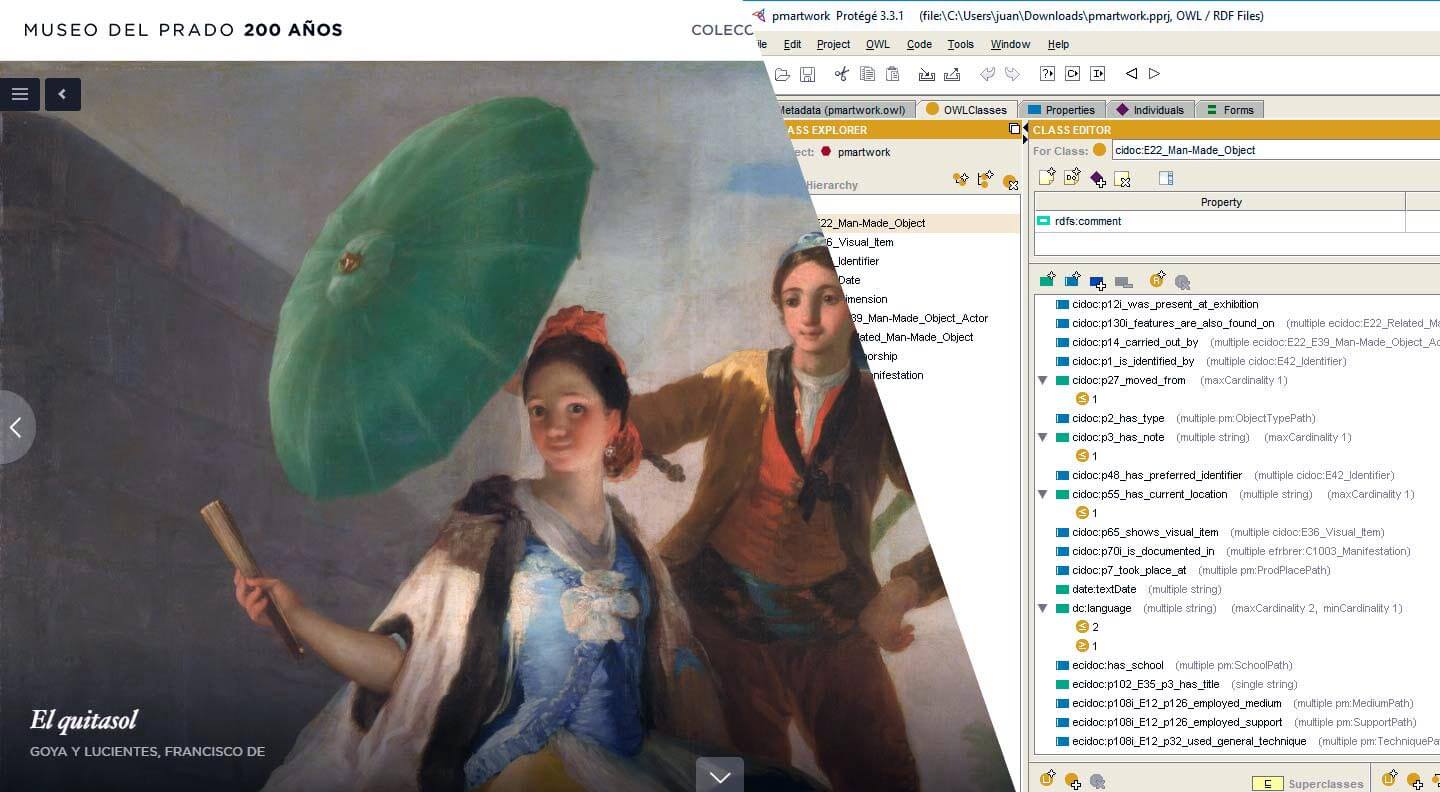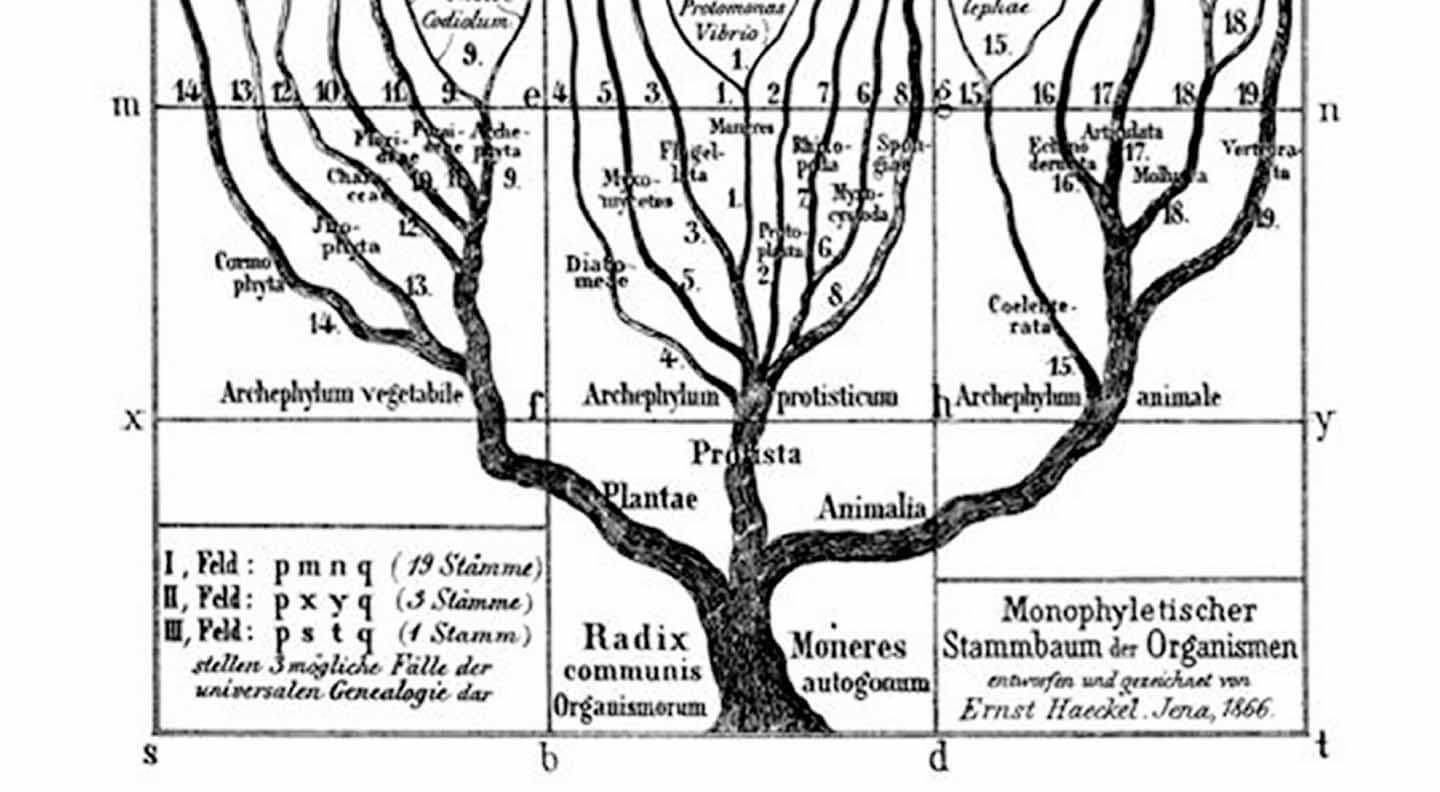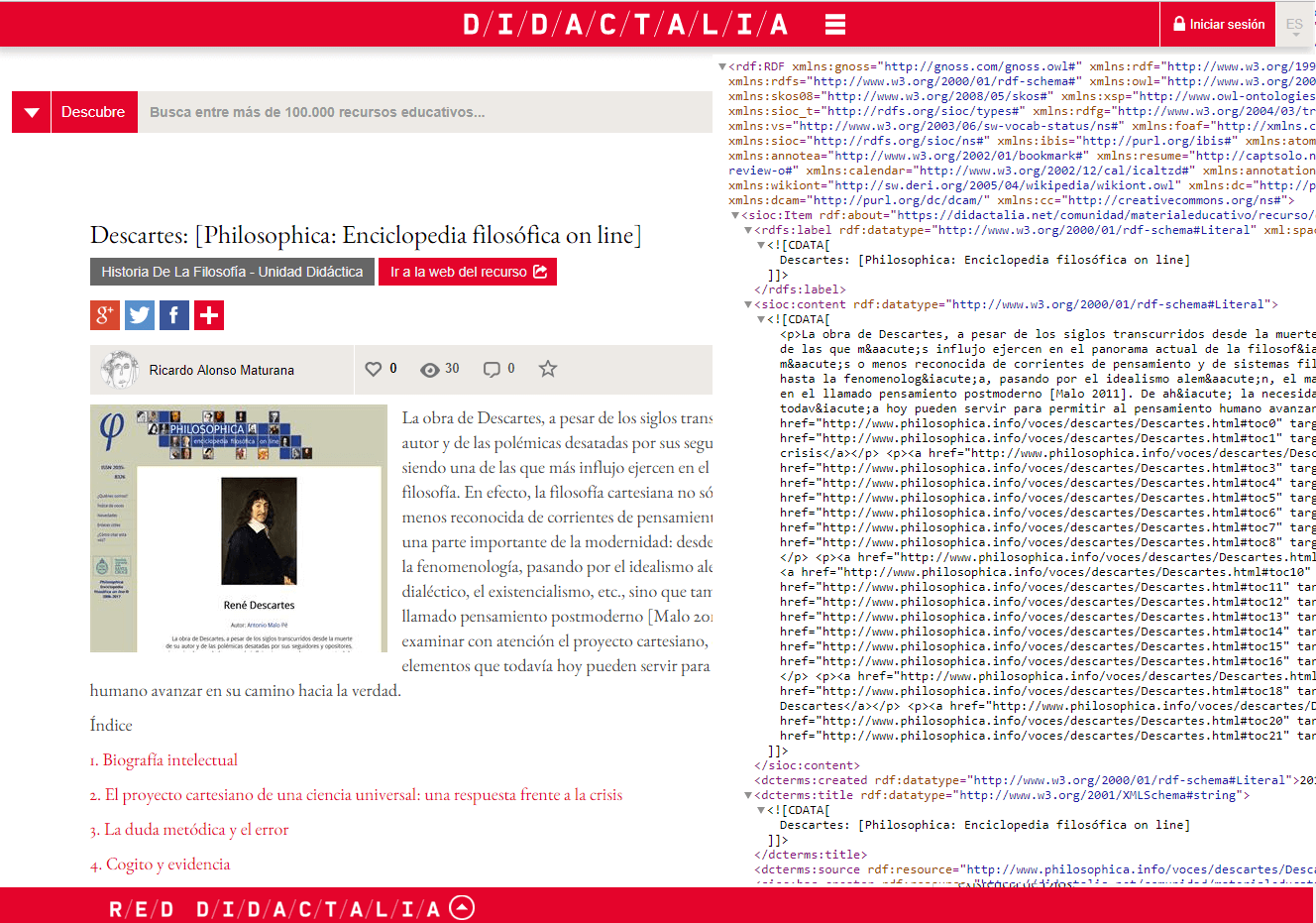gnoss semantic ai platform: management
Knowledge Graph management and Metadata management
Knowledge is in relationships. Unify, integrate and make all your organisation’s content and resources easily accessible
GNOSS is a Metadata Management solution designed to generate Knowledge Graphs in a way that will be transparent for your users. The data-to-data and entity-to-entity links created by these Knowledge Graphs are simultaneously meaningful to the human reader and can be read by machines and systems.
All contents published in the Graph are represented in native RDF and OWL formats, the W3C standards for the Semantic Web.
Ontology management
GNOSS uses ontologies written in OWL (the W3C standard for the Semantic Web) to define your organisation’s Knowledge Graph structure. You can create your own ontologies or reuse existing models or ontologies for certain domains or knowledge areas including FOAF, CIDOC-CRM, Good Relations, and rNews, among others.
GNOSS offers a general purpose semantic by default based on standard vocabularies such as Dublin Core, FOAF, SIOC, SKOS, which may be sufficient for many projects not requiring an extremely precise cognitive approach.
The GNOSS Consultation Service is designed to help you define your project’s semantic and intelligence strategies, identify the semantic model that forms the foundation of your organisation’s Knowledge Graph and develop the project’s ontological engineering.

Thesaurus and taxonomy management
Using taxonomies and thesauri aids you to organise the semantic resources published in your Knowledge Graph. With taxonomies and thesauri, knowledge (content, documents) can be organised without being shelved away in folders simply through the assignment of a set of attributes by which it can be retrieved.
GNOSS offers management interfaces to facilitate the creation and evolution of the taxonomies and thesauri you design, personalise and use. The administrator can create multiple categories, which will give shape to the taxonomy or thesaurus. Their names can be changed, as well as their order and location. New ones can be added or deleted.
GNOSS applies the SKOS (Simple Knowledge Organization System) vocabulary so as to guarantee interoperability with other taxonomies or Knowledge Graphs. It means that APIs are available to simplify importing existing thesauri from other pre-existing projects.

Linked Data management
Your Knowledge Graph is published with GNOSS in the form of data linked to other data. This process involves W3C standards for the Semantic Web. This makes it possible to turn a web of linked documents into a Linked Data Web, which is a network of searchable entities that can be interpreted by machines and humans alike.
If you openly publish your data and you link it to other projects on the Linked Open Data Web (LOD Web), you will be contributing the construction of the Semantic Web. You can additionally link and enrich your data with open data generated by third parties.
To this end, GNOSS integrates a linking engine into the LOD Web that automatically connects the contents your users publish to the LOD dataset you have chosen. You can see this in action at Didactalia, where we link the resources published on DBpedia (Semantic Wikipedia).

API and data integration
It’s easy to massively migrate data or build synchronisation processes with GNOSS APIs in quasi-real time in order to integrate data from different sources or information systems into a single interpretation layer. This layer is your unified, searchable Knowledge Graph.

Data portability and interoperability
GNOSS massively generates an API REST so that third-party applications can consult the data you publish in your Knowledge Graph. Beyond HTML, your web page could also be an RDF/OWL web page that can be queried by third-parties, if you wish.

A large quantity of organisation knowledge may be stored in documents and repositories that lack a clear structure. If this is your organisation’s situation, we can help you to extract this difficult-to-access knowledge by using our entity extraction and automatic labelling algorithms. Your knowledge will be consolidated into a unified, searchable Knowledge Graph.

